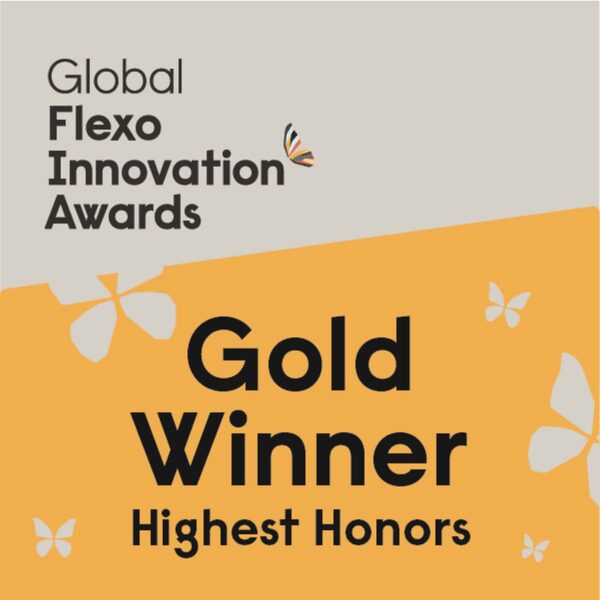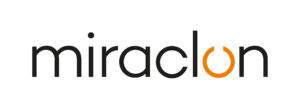James Chuang, President of California-based Sunshine FPC, has no doubt about the value of industry awards: “They let us show what we’re about, and what we’re capable of. They’re key to our brand.”
A crowded trophy cabinet testifies to the company’s success. It holds no less than 16 Gold awards from the Flexographic Technical Association (FTA) — including ten ‘Best of Show’ awards — plus a PIA award, and multiple FlexoTech awards from Europe. Sunshine’s partner for all these awards is Trisoft Graphics, an innovative flexographic prepress provider serving narrow-, mid- and wide-web flexible packaging and label printers globally.
The latest addition to industry recognition— another joint project with Trisoft — is a Gold award in the Global Flexo Innovation Awards (GFIA), sponsored by Miraclon to recognize packaging businesses that are transforming flexo with the help of KODAK FLEXCEL NX Technology. An independent panel of eight flexo industry experts recognized the partners for three achievements: successfully converting packaging to flexo from other print processes (in this case, gravure), their commitment to sustainable print, and designing an innovative print production workflow. In addition, they were also awarded Highest Honors – given to winners that judges believed demonstrated the biggest impact on advancing the flexo printing process.
A Winning Partnership
The relationship between Sunshine and Trisoft began over a decade ago in 2008, when Sunshine was looking for a new prepress partner. Around the same time, Trisoft had just installed the new KODAK FLEXCEL NX System — the first prepress installation west of the Mississippi — and the company was energetically promoting its benefits.
Tristan Zafra, President of Trisoft, recalls his first response to the new technology: “We had been using digital plates from another major manufacturer, but when Kodak showed me FLEXCEL NX Technology. I’d never seen anything like it. We were used to getting dot sharpening with digital plates and bumping up the minimum dot to compensate. But with FLEXCEL NX Technology the MinDot was 1-to-1 — there was no distortion, no sharpening.”
James recalls that for Sunshine, as well as better on-press efficiency, minimized dot gain, greater consistency and reduced wastage, it was the possibility of printing much higher line screens that really got their attention.
Today, all Sunshine’s work goes on FLEXCEL NX Plates produced by Trisoft using the latter’s patented FleXtreme PLUS+ technology, which is a combination of proprietary screening, separation, color management, and processing techniques. Says James: “We get, excellent dot replication, reliable ink transfer with minimal unwanted ink spread and high-resolution print. And because we hit target colors and densities faster, we get on press faster. The positive impact on our overall efficiency is huge.”
The two companies treat every project they collaborate on as a potential entry and approach every project in the same way. Explains Tristan: “James and I keep in close touch as a matter of course. After identifying what the client wants to achieve, we break the project down into the necessary steps and components. Then we bring our respective teams together to go over the specifics.”
This approach is because, for both companies, the awards are about more than winning: over the last decade they have been a big part of a campaign to bring flexo-printed flexible packaging production home to the West Coast of the US, and back from the Pacific Rim countries that have captured a large portion of the market since the mid-2000s. Says James: “The only obstacle to ‘reshoring’ “has been the perception — almost a fixation — among brand owners that domestic flexo was inferior to gravure. Go back a few years, and it was virtually impossible to win business back from overseas, but things are changing.”
For the last decade, Sunshine and Trisoft have worked together to turn things around through a program of R&D, continuous education, training, technology innovation and capital investment. And steadily — “piece by piece, job by job,” in James’s words — they have pushed the boundaries of flexo printing, printing with higher line screens and more sophisticated graphics and showing that flexo can compete with, and outperform, gravure.
Perfectly suited to a demanding market
Based in Montebello, California, Sunshine was started in the mid-1980s by James’s father, initially to import pre-manufactured polyethylene bags — a relatively new market at the time. As it matured, Sunshine sought new markets, at which time James joined, bringing with him a background in animated feature production and a natural leaning towards graphics-intensive products. These helped shape today’s business in high-quality flexible packaging, primarily for food (fresh-cut produce, meat, poultry and fish) and nutraceuticals — all under the strapline “Flexible packaging for extraordinary products.”
The company’s business model and product portfolio are ideally suited to the prevailing market conditions in the demanding Californian packaging market. The key planks are vertical integration — from extrusion through printing and laminating to converting — an emphasis on GMP and compliance procedures, and an innovative approach to sustainable products. These work together to give Sunshine a compelling offering to clients: tight integration provides the total quality control necessary to meet the state’s stringent compliance and inspection regime, and the innovative expertise that comes with in-house extrusion gives the company an edge in sustainable packaging technology.
“Vertical integration was a big deal at the time,” explains James, “and it’s still exceptional. Most players in the supply chain focus on niches: extruders develop new film structures and substrates, and printers and converters focus on value-added specialist products. We do both: on one hand, we experiment with extruding sustainable resins, on the other we provide a huge variety of converting capabilities, from laminating atmosphere-controlled films to Ziploc closure bags, and produce high-resolution, high-quality print. We’re one of the few West Coast businesses that can do all this.”
Novel approach to conversion – leveraged for the winning entry
Sunshine takes a novel approach to converting brands from gravure to flexo. “At the beginning we don’t tell them it’s flexo. We wait until when the quality has spoken for itself. Usually, we don’t take on a whole family of SKUs right away. Say there are 10 items, we’ll prove ourselves on the first couple, then on a few more SKUs — which shows the brand accepts flexo is as good as gravure — then the whole family.”
The entry that won Gold at the GFIA is a gravure job imported from overseas. Printed on Sunshine’s Windmöller & Hölscher Miraflex Series II press, and rated by the judges as “an outstanding print job”, it actually comprises two separate, highly-detailed impressions printed as a combination print — an approach that posed significant technical challenges. Nevertheless, the judges noted that the 250-line screen and 9600-dpi output produced strong vibrant colors and fine detail within the product images and exceptionally readable microtext around the UPC and “Sell By” boxes.
It also demonstrated the strength of Sunshine’s sustainability credentials, being printed on a plant-based substrate instead of conventional petroleum-based PET film. Sunshine and Trisoft overcame technical challenges due to different ink adhesion properties to produce a winning result that reduced the total gauge, size, and dimension of the package, eliminated a lamination process and reduced waste and power consumption. The finished packaging is compostable in both industrial and domestic composting environments and is also suitable for anaerobic digestion.
Breaking down barriers
Asked about future plans, James replies: “There’s no avoiding the fact that business conditions are difficult — in the early 2000s, there were more than 40 converters in our area, now there are a handful. So, our plan is to keep doing what we do —breaking down barriers, and doing what hasn’t been done before. And with Trisoft and the KODAK FLEXCEL NX Technology from Miraclon, we couldn’t ask for better partners.”



